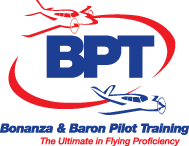From the Subjective to the Objective – Making Better Decisions
By Gene Benson,
Pilot and Aviation Educator
We make thousands of decisions every day. Most of them are done with little conscious thought, such as whether to eat our soup with a fork or a spoon. Some require more thought but are not terribly important, such as which kind of dressing we choose for our salad. Others are more important such as what to write in response to a performance review.
But as pilots, our decisions regarding flying are kicked up to a much higher level of importance. Nearly all our aeronautical decisions are extremely important. Some of them are critical life or death decisions.
As pilots, we think that we are good at making aeronautical decisions. We provide evidence of that by citing our fat logbooks and our pilot certificates and ratings. But a study of aircraft accidents will most certainly include mishaps involving pilots with logbooks fatter than ours and certificates and ratings that exceed our own. How can we explain that? We can say that the pilot became complacent. We can say that the pilot became overconfident. But what we really need to say is that the pilot is human. Sometimes our humanness can get in the way of making the best decision.
Our brains are wonderfully complex organs that include plenty of automation. We know that we do not need to think about breathing, swallowing, or blinking an eyelid. These are things programmed into our brain’s auto-flight system. But the brain’s auto-flight system does much more, especially when it comes to decision making.
According to cognitive neuroscientists, only about 5% of our decisions are made on the conscious level and the remaining 95% are made by our brain’s auto-flight system. Of course, those cognitive neuroscientists would refer to the mind’s unconscious level and not the brain’s auto-flight system.
Our brains work to make our lives easier by providing mental shortcuts which are generally helpful. But like any shortcut, sometimes we are led astray. This is especially true when it comes to our aeronautical decision making. We might be steered into a bad decision by external factors. The need to complete a flight to attend a business meeting, wedding, funeral, or something else perceived as being very important can cause our brain’s auto-flight system to shortcut our normal decision making. We may make decisions that contradict our training or good operating practices, and we may venture into areas that exceed our capabilities. We may decide that something will be OK just this once. Of course, every time we deviate from a standard operating practice and get away with it, we are more likely to deviate again and stray farther from safe operations.
Our brain’s auto-flight system can also cause us to stick with a decision when evidence shows that it was not a good one. VFR pilots sometimes fly into IMC rather than turn around because they believe it is just a little rain shower and will be clear in a few minutes. Pilots take off with a rough running engine because they believe it is just a fouled spark plug and that it will clear up, but then continue the flight even when the condition worsens.
We can reduce the risk of allowing our brain’s auto-flight system to steer us into making bad decisions by using tools that provide concrete guidance to many of our aeronautical decisions. Yes, we have some tools to help us do that and most pilots are already familiar with them but may not be using them regularly.
First, let me offer a word of caution regarding two common tools. The PAVE Checklist and the Risk Assessment Matrix are widely disseminated and promoted. They can be effective, but they are subjective and highly susceptible to influence by external factors if used just prior to a flight. I prefer tools that are prepared well before the flight and require objective decisions. Such tools allow us to use our conscious minds to set guidelines to be used in upcoming decisions.
A favorite of mine is the Personal Minimums Checklist. However, I am not a fan of some of the online versions because they still ask for a subjective decision such as, “Is the airplane suitable for the mission?” My favorite is “Getting the Maximum from Personal Minimums” which is an FAA publication authored by Susan Parson. By creating our own personal minimums checklist well before the need for a flight arises, and by quantifying our minimums, we are establishing a means of making an objective decision when the time comes.
Another one of my favorites is the Flight Risk Assessment Tool, or FRAT. Widely used in business aviation, the FRAT quantifies many aspects of the flight by assigning a numerical value to each item based on predefined criteria. The numerical values are totaled and compared to a scale that might indicate “GO,” “NO-GO,” or might provide a qualified “GO” with certain conditions applied. There are several online sources for FRATs including some in spreadsheet format. An internet search will find several. I recommend using one from the FAA but remember that it is critical that it be customized to fit you and that customization must be done well before the day of the flight.
Our humanness makes our lives worthwhile, interesting, and fun, but it can lead us down a dangerous path when it comes to aeronautical decision making. Let’s use our conscious minds to protect ourselves from the tricks of our unconscious minds.
Remember, always fly like your life depends on it.
References: Daniel Kahneman, Thinking, Fast and Slow, (New York, Farrar, Straus and Giroux, 2011); http://www.rochester.edu/news/show.php?id=3295
Gene Benson has had a lifetime of aviation experience. He has lived and breathed aviation from his first official flying lesson at the age of 14, to his first solo on his sixteenth birthday, to his 8,000 hours of flight instruction given. He has served as the Dean of Aeronautics for an aviation college, as an instructor for a major domestic airline, consultant to several foreign and domestic airlines, and to business aviation. His academic background includes degrees in psychology, education, and business. His specialty now is the application of human factors to error reduction and safety in aviation and other industries. He is presently a FAASTeam Lead Representative and has recently served as a member of the NBAA Safety Committee. View Gene’s work at genebenson.com and https://www.vectorsforsafety.com/.
Reprinted with permission from Avemco. Articles and news items provided by Avemco are not intended to provide technical or legal advice. Content is for general information and discussion only and is not a full analysis of the matters presented. The information provided may not be applicable in all situations, and readers should always seek specific advice from the FAA and/or appropriate technical and legal experts before taking any action with respect to any matters discussed herein.




